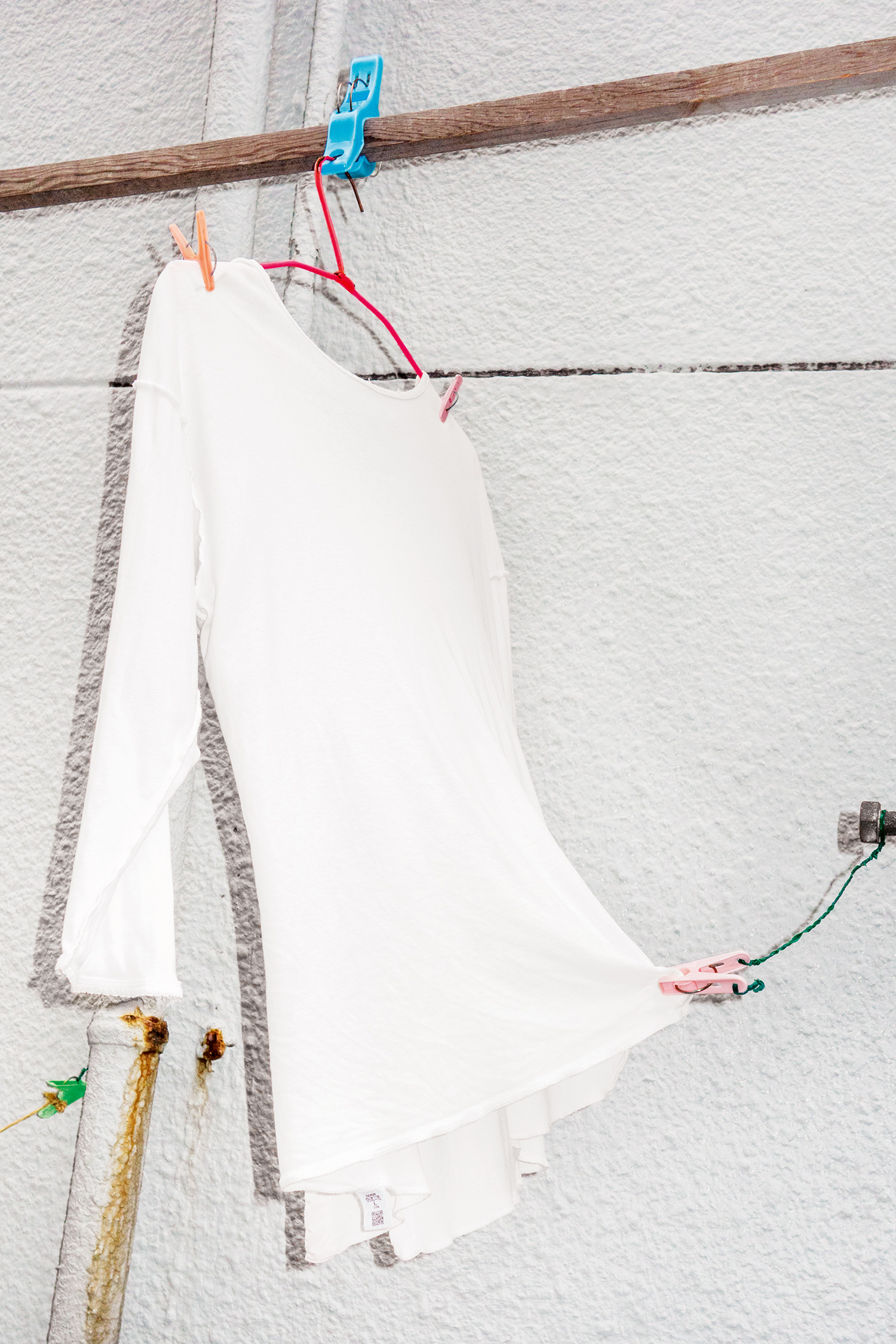Two years ago, on his annual visit to Japan, the photographer Fumi Ishino started feeling that things were a little bit off. Perhaps it was the billboards gearing up for the 2020 Olympics. Perhaps it was the advertisements trumpeting a Cool Japan. Whatever it was, fifteen years after his move to the United States for college, he walked around neighborhoods of Tokyo with his camera, followed by a feeling that the place was suddenly neither home nor foreign. It was a feeling of zure, he said, of slippage, and he repeated the word softly. A feeling of zure, lopsidedness: a frame on the wallever so slightly crooked.
This slight but powerful sense of unease suffuses Ishino’s images, that of witnessing the familiar transform into the strange. Ishino, born in Hyogo and now residing in Los Angeles, marauds in the particulars of the placeless: what we can learn from, say, a whitewashed wall in a nameless residential town, or from the ready symbolism of the Tokyo Tower. In Loom (2018), Ishino’s first collection of photographs taken entirely in Japan, he disrupts our habits of scouring images for markers of nationhood. “I avoided anything that hinted of Tokyo or Japan,” he told me. “I wanted to obscure the sense of location.” In a city stuffed with shrines and monuments to capital, Ishino wanted to capture things that weren’t made to endure at all. He is interested in places that are always forgotten, the category of images that are usually shelved, in our field of vision, as unimportant. When we remember a place, what does our perception fill in on the periphery? “And, when you no longer have a place you call home,” Ishino said, with a little laugh, “doesn’t everything become background?”
We see a shade of white across all of his photographs in Loom: on exteriors, curtains, a trash can. It’s cold with the blue undertones of whitewash, a hue that, exhilaratingly, doesn’t yield to interpretation. I found myself alternating between examining this peculiar whiteness and being pulled to bursts of human color: a pink flower planted just at the edge of the frame, a child’s imagination on a garage wall, an orange elephant, a recycling bin with brown scruff around its mouth. In my dueling impulse to fixate on the differences in the debris of people, and also on the sameness of sprawling, cut-off expanses of white, I felt the weight of my own displacements, the everyday tensions of being constructed by multiple cultures, not just one.
“I think we are always competing between wanting to travel and live in a world with no borders,” Ishino says, “and the desire to call somewhere home.” None of his photographs from Loom illustrates this more than one of a white shirt hung alone on a pole, caught mid-dry. I see the clothespins acting as competing identities and notions of nationality, tugging the cloth into a slumping, restless grace. But in its loose tautness, Ishino presents a more complicated aesthetics of suspension, a gentle balance upheld amid buffeting forces, found only from crisscrossing between worlds.



Courtesy the artist
Read more from Aperture, issue 238, “House & Home,” or subscribe to Aperture and never miss an issue.


























